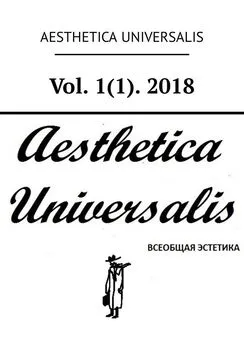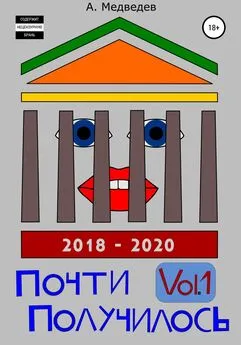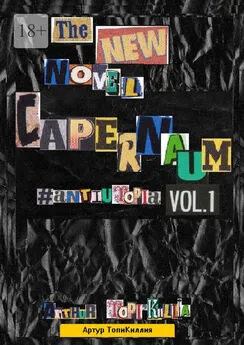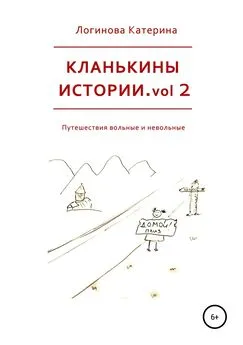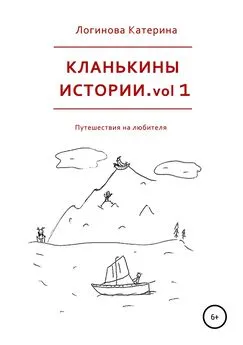Сергей Дзикевич - Vol. 1(1). 2018
- Название:Vol. 1(1). 2018
- Автор:
- Жанр:
- Издательство:неизвестно
- Год:неизвестен
- ISBN:9785449096876
- Рейтинг:
- Избранное:Добавить в избранное
-
Отзывы:
-
Ваша оценка:
Сергей Дзикевич - Vol. 1(1). 2018 краткое содержание
Vol. 1(1). 2018 - читать онлайн бесплатно ознакомительный отрывок
Интервал:
Закладка:
In mimetic processes the outside world becomes the inner world and the inner world becomes the outside world. The imaginary is developed and the imaginary develops ways of relating to the outside world. Again in a mimetic loop, this in turn affects the inner world of the imaginary. These processes are sensory and governed by desire. All the senses are involved which means that the imaginary has multiple layers. Since there is an intermingling of images, emotions and language, these processes are rooted in the body and at the same time transcend the body as they become part of the imaginary (Wulf 2014; Hüppauf, and Wulf 2009; Paragrana 2016).
As we read works of literature, it is mimetic processes that bring to life an assemblage of non-sensory words into sensory ideas and emotions and give them meaning. (Benjamin 1980a, 1980b). It is the same with other products of culture that also require mimetic processes for them to come alive. Such processes are particularly important in the transfer of the cultural imaginary from one generation to the next, since these processes require a metamorphosis to keep forms of living, knowledge, art or technology alive. As mimetic processes are not simply methods of copying or producing worlds that have already been symbolically interpreted but also consist in our taking and then incorporating «impressions» of these worlds, these mimetic relationships always contain creative aspects which alter the original worlds. This creates a cultural dynamism between generations and cultures which constantly gives rise to new things.
IMAGES OF THE HUMAN BEING: THE VISUALISATION OF THE INVISIBLE
It is in mimetic processes that images of the outside world are transferred to our imaginary. Our imaginary constructs images which shape the outside world (Wulf 2018). These images also include those we make of ourselves, images in which and by means of which we try to make sense of ourselves. People create images of themselves in all cultures and historical periods. They need these images to communicate about themselves and to understand themselves. Images of the human being are designs and projections of the human being. They are formed in order to visualise representations of the human being or individual aspects of a person. These representations are simplifications of human diversity and complexity in illustrations. A «productive moment» is portrayed here in these representations, as the discussion about the Laocoon statue shows. Historical developments and interpretative variants are not displayed in such iconic «productive moments». The special nature of an image lies in the concentration on one moment and in the suggested evidence, but the limits of the iconic representation are also revealed therein. Human images are always simplifications, which, despite their simplifying character, are extremely effective. The power structures of a society which are often difficult to see are incorporated in the construction of the human images. Human images are the result of differentiated inclusion and exclusion processes. Desires, norms and values are conveyed in human images. Human images are aimed at the normalisation of people. Social and cultural institutions, as well as religions, utopias and world views, use human images to portray their conceptions of humans and to embed their ideas in the imaginary and in the actions of humans.
Such human images are clearly expressed, for example in the sculptures of Ancient Greece, in which the ideal of the good and beautiful, the Kolokagathia, the unit of physical beauty and spiritual quality, is expressed. Also in the Christian Middle Ages there are human images in which the devout, godly person is represented. The biblia pauperum in the churches of the Middle Ages show this clearly. We find representations of godly people subdivided according to status into monks, nobles and peasants, in which the hierarchical structures of the society are also reflected. Nationalism in the 19th century and in the first half of the 20th century highlighted numerous idealising images of, for example, the «Germans» and the «French», which became role models for education and an honourable life. Socialism in the Soviet Union and in Eastern Europe also tried to embed a certain human image in the imagination of the young generation. Today the European Union also endeavours to achieve the human image of a free, independent democratic citizen as a model of human development and education in Europe (Wulf 1995, 1998).
THE IMAGE OF A SUSTAINABLE HUMAN BEING
After the period for the realisation of the millennium objectives set for the developing countries expires in 2015 and succeeds in reducing poverty and illiteracy in many parts of the world, the community of nations is currently working intensively on developing sustainability goals (for the World Summit in autumn 2015). In this process there are philosophical and anthropological analyses of the ethical questions associated with sustainability, the development and discussion of the feasibility of the sustainability goals, the clarification of the concepts and the consistency of the argumentation and the methodical and argumentative approach. Development is sustainable when it «secures the quality of life of current generations without compromising the ability of future generations to shape their life» (DUK 2014). The sustainability objectives arising from this definition are interrelated with a culture of peace and human rights, cultural diversity and democratic participation and the rule of law. A culture of sustainable development is necessary for the transformation of the economy and society. Future-oriented models, ideas, norms and forms of knowledge are required for its development. These should be supplemented by the development of sustainability values and corresponding attitudes and ways of life. The education for sustainable development also plays an important role here. Without it the initiation of independent action is not possible. The international community of states is looking for a human image, on which representatives from all societies and cultures can agree and which can span the cultural differences as a role model. – It is currently not clear whether such a human image is possible and whether such an image would destroy the cultural diversity between the parts of the world. There is also reasonable doubt as to whether and to what extent such images can be used to level cultural differences between the geographical regions of the world without cultivating tension between them.
DEVELOPMENT AND POWER OF IMAGES OF THE HUMAN BEING
Why do we assume that images of the human being and images produced by the human being are so effective? Why do they have such an influence on the development of societies, communities and individuals? I believe three reasons are of particular importance here:
1) Cultural learning takes place using mimetic processes, i.e. processes of creative imitation (Wulf 2013a; Gebauer and Wulf 2018, 1998). Images play an important role here. This includes images of other people, images of the living environment and human images occurring gradually in synthetic processes. Human images give orientation and meaning. They are shared with other people and create feelings of belonging and togetherness. Herein lies the sustainability of their effect. Images are not easily adopted, but lived and internalised with other people and their interpretations. They occur in action and language games. In contrast to the instincts of animals, they are historically and culturally determined and can be changed.
2) Human images have profound effects because they occur at least partly in childhood and create a sense of being part of a community. They occupy the imaginary and become part of the imagination. They influence our perception of the world, culture and other people and our own self-perception. Human images become part of the person and his imagination and have an influence on his emotions. They are repeated and consolidated by the rhythms and rites of life. Like plants with extended roots, particular and universal human images are fixed in the imagination and gain effect from the connection with already existing ideas and images (Hüppauf, and Wulf 2009).
3) As images of the imagination and the imaginary, human images become part of the body (Wulf 2018; Pragrana 2016). They are inherent and therefore can be difficult to change. Often they consist not only of individual images, but of picture sequences, even of picture networks, with which heterogeneous, sometimes even paradoxical images are «captured». As a result, existing human images are repeatedly confirmed and their importance is reinforced (Wulf 2014).
THE WORLD BECOMES AN IMAGE
A characteristic of modernity is the fact that the world is opposite to man and is perceived as an object and an image. In ancient times, people, animals and the environment were part of living nature, the Physis . They were generally perceived as similar to each other. They were stimulated by the power, the dynamis of nature, the Physis . This relationship of people to the world was retained in the Middle Ages. Animals, people and world are created by God and have a common creatureliness. In the modern era this relationship of the (Western) human being to the world, to other people and to themselves changes. Nature is no longer experienced as animated. It becomes the object. The people are no longer part of nature or the world created by God, but are opposite it; they measure it and register it as «object». In this process the world becomes an image. With the development of new media this trend increases. Not only the world and the other people are perceived as images, we ourselves are also increasingly perceiving ourselves in the mode of images. The widespread use of digital photography in everyday life and especially the sefies are proof of this (Kontopodis, Varvantakis, and Wulf 2017). Using electronic photos or films we create all important events, and ultimately create an image of ourselves (Wulf 2013a, 2013b).
Human images show the central role images play, and with them the imagination and the imaginary world, for the constitution of the person and his education. They also make it clear how strongly the images are defined by their respective historical and cultural character and how important their research is within the framework of anthropology. Human images are images which the person creates of himself, and whose significance must be understood for his perception of the world, his memories and his future projections. They are generated by social and cultural practices of everyday life and by the arts. Human images become part of the collective and individual social and cultural imaginary world and thus play a part in shaping human activities. The creation of images is a feature, which we share as human beings, whose form, however, is very different in history and in different cultures. As the images and the imaginary world visualise something, which would otherwise remain invisible, their research is an important area of anthropology.
What we describe as an «image» is different, meaning that the spectrum of the term is broad and requires a range of further clarification. Sometimes we mean the result of visual perception processes. Under the influence of neuroscience and its visualisation strategies, the results of the perception with other senses are often even described as «images». We then speak about mental or «inner» images, which bring to mind something which is not actually present. These include, for example, souvenir pictures, which differ to the perceptions due to their vagueness. The same applies to sketches or drafts of future situations, to dreams, hallucinations or visions. Many aesthetic products also take the form of images. They are products of a process aimed at the creation of an image. As metaphors, they are ultimately a constitutive element of language. Creating images, recognising images as images, dealing with images using one’s imagination, is a universal capability of humans (Wulf 2014, 2018). However, it varies depending on the historical period and culture. Because which images we see and how we see images is determined by complex historical and cultural processes. How we perceive images and deal with them is also influenced by the unique nature of our life history and subjectivity.
Читать дальшеИнтервал:
Закладка:
